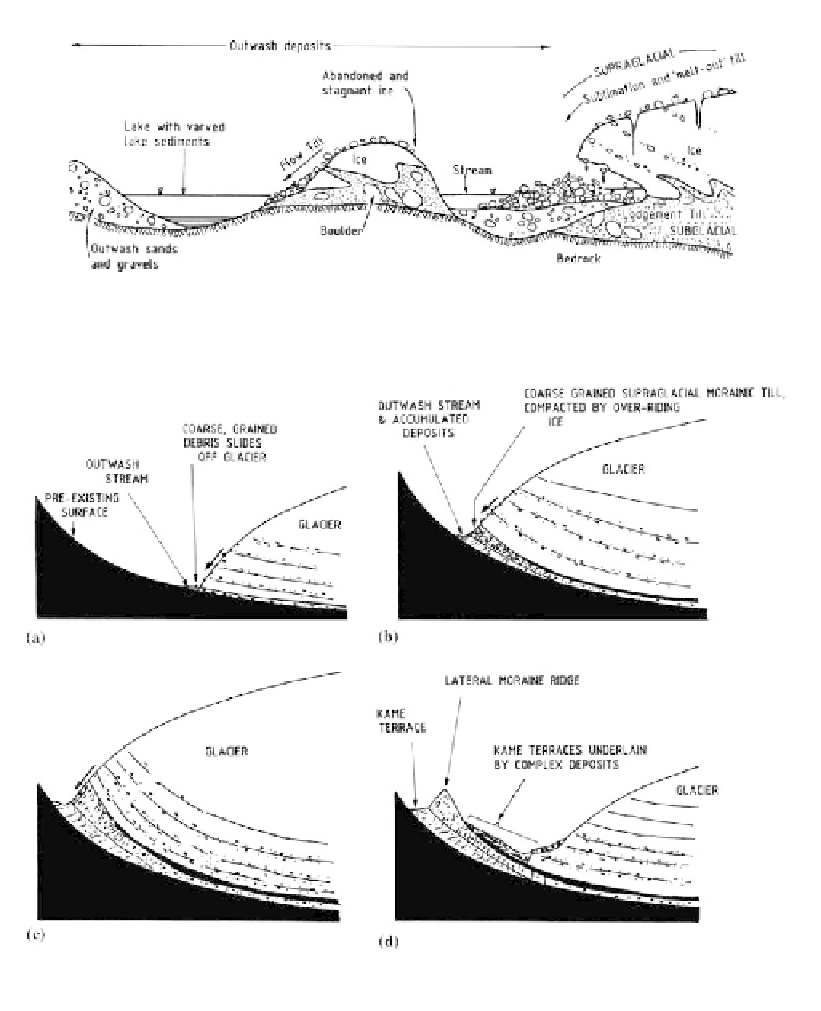Environmental Engineering Reference
In-Depth Information
Figure 3.47.
Diagrammatic longitudinal section at a glacier snout, and downstream (Blyth and
de Freitas, 1989).
Figure 3.48.
Development of a lateral moraine ridge and associated deposits (Boulton and Eyles, 1979).
and outwash materials are compressed and compacted by the glacier and their dips
become steeper.
During the retreat (Figure 3.48d) the glacier shrinks away leaving the lateral moraine as
a ridge. Such ridges often remain steep (up to 70°) due to the high degree of compaction
and some cementation of the moraine. Between the ridge and the ice a series of terraces
by complex sequences including glaciofluvial sands and gravels (stream-deposits), lami-
nated clays (lake-deposits), poorly- or non-compacted till (supraglacial morainic till) and
lodgement till.
Terraces formed by the outwash next to the valley side are also known as kame terraces
(Figure 3.49).


